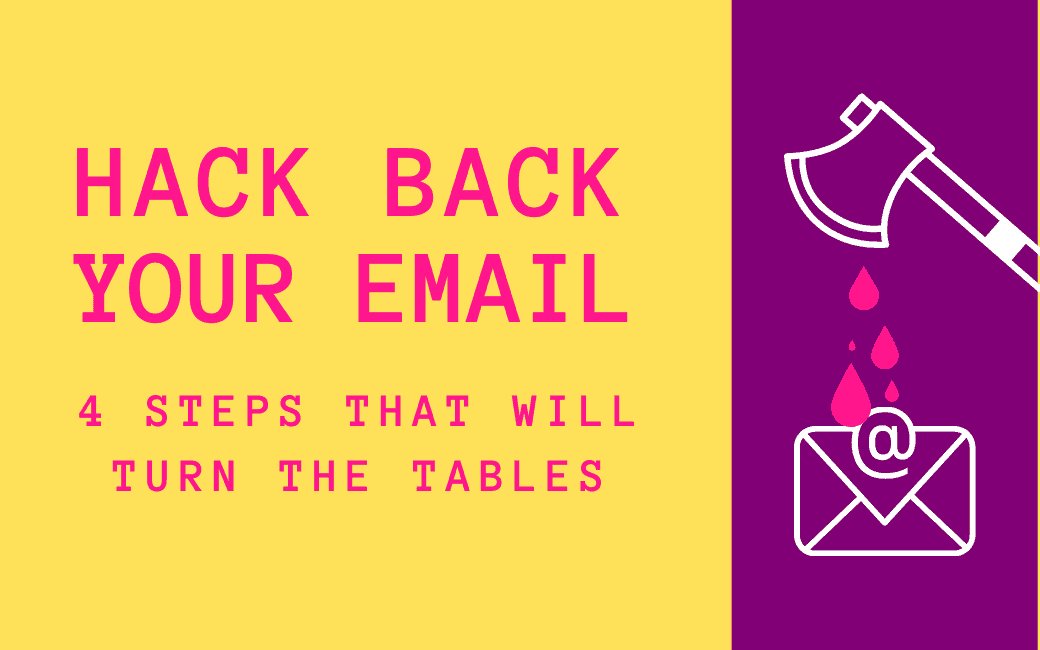Email is the curse of the modern worker. Some basic math reveals just how big the problem is. The average office-dwelling professional receives a hundred messages per day. At just two minutes per email, that adds up to three hours and twenty minutes per day. If an average workday is nine to five minus an hour for lunch, then email eats up nearly half the day.
Realistically, though, that’s a very conservative estimate, since those three hours and twenty minutes don’t include the wasted time needed to get back on task between checking emails. In fact, a study published in the International Journal of Information Management found office workers took an average of sixty-four seconds after checking email to reorient themselves and get back to work. Given the hundreds of times per day we check our devices, those minutes can add up.
Lest you think email time is well spent, researchers writing in the Harvard Business Review have concluded that an astonishing number of workplace emails are an utter waste. When it comes to the hours managers spend on email, they estimate that “25 percent of that time is consumed reading emails that should not have been sent to that particular manager and 25 percent is spent responding to emails that the manager should never have answered.” In other words, about half the time we spend on email is as productive as counting cracks in the ceiling.
Why is email such a persistent problem? The answer can be found in understanding our psychology. Email is perhaps the mother of all habit-forming products. For one thing, it provides a variable reward. As the psychologist B. F. Skinner famously discovered, pigeons pecked at levers more often when given a reward on a variable schedule of reinforcement. Similarly, email’s uncertainty keeps us checking and pecking. It provides good news and bad, exciting information as well as frivolity, messages from our closest loved ones and from anonymous strangers. All that uncertainty provides a powerful draw to see what we might find when we next check our inboxes. As a result, we keep clicking or pulling to refresh in a never-ending effort to quell the discomfort of anticipation.
Second, we have a strong tendency for reciprocity — responding in kind to the actions of another. When someone says “Hello” or extends their hand to shake our own, we feel the urge to reciprocate — not doing so breaks a strong social norm and feels cold. Though the grace of reciprocity works well in person, it can lead to a host of problems online.
Finally, and perhaps most materially, email is a tool we have little choice but to use. For most of us, our jobs depend on it, and it is so woven into our daily work and personal lives that giving it up would be a threat to our livelihoods. Email is a central concern in many of my articles on productivity and time management.
However, like many things in life that take more time and attention than we’d like, we can get email under control. There are techniques we can deploy as part of our working routines to defuse the unhealthy magnetism of email. Let’s focus on a few techniques that deliver the best results with the least effort.
The amount of time we spend on email can be boiled down to an equation. The total time spent on email per day (T) is a function of the number of messages received (n) multiplied by the average time (t) spent on each message, so T = n × t. I like to remember “TNT” to remind me how email can blow up a well-planned day.
To reduce the total amount of time we spend on email per day, we need to address both the n and t variables. Let’s first explore ways to reduce n, the total number of messages received.
To receive fewer emails, we must send fewer emails.
It seems obvious, but most of us don’t act in accordance with this basic fact. So strong is our need to reciprocate that we reply to messages moments after they’re received — nights, weekends, holidays, it doesn’t seem to matter.
Most emails we send and receive are not urgent. Yet our brain’s weakness for variable rewards makes us treat every message, regardless of form, as if it’s time sensitive. That tendency conditions us to check constantly, return replies, and bark out whatever requests come to mind instantaneously. These are all mistakes.

Open up office hours.
In my case, I receive dozens of emails every day asking to discuss something related to my books or articles. I love talking with my readers, but if I responded to each email, I wouldn’t have time for anything else. Instead, to reduce the number of emails I send and receive, I schedule “office hours.” Readers can book a fifteen-minute time slot with me on my website here.
Next time you receive a non urgent question over email, try replying with something like, “I’ve held some time on Tuesday and Thursday from 4:00 to 5:00 pm. If this is still a concern then, please stop by and let’s discuss this further.” You can even set up an online scheduling tool like mine to let people book a slot.
You’d be amazed how many things become irrelevant when you give them a little time to breathe.
By asking the other party to wait, you’ve given them the chance to come up with an answer for themselves — or, as is often the case, time for the problem to just disappear under the weight of some other priority.

But what if the sender still needs to discuss the question and can’t figure out the problem for themselves? All the better! Difficult questions are better handled in person than over email, where there is more risk of misunderstandings. The bottom line is that asking people to discuss complex matters during regular office hours will lead to better communication and fewer emails.
Slow down and delay delivery.
Following the maxim that the key to receiving fewer emails is sending fewer emails, it’s worth considering how we can slow down the email ping-pong game by sending emails well after you write them. After all, who made the rule that every email needs to be sent as soon as you’re done writing it?
Thankfully, technology can help. Instead of banging out a reply and hitting send right away, email programs like Microsoft Office and tools like Mixmax for Gmail allow us to delay a message’s delivery. Whenever I reply to an email, I ask myself, “When’s the latest this person needs to see this reply?”
By clicking just one extra button before sending, the email goes out of my inbox and off my plate but is held back from being delivered to the recipient until the predetermined time I selected. Thus, fewer emails sent per day results in fewer emails sent back per day.
Not only does delaying delivery allow time for the matter to resolve through other means, it also makes it less likely I’ll receive emails when I don’t want them. For example, while you might enjoy clearing out your inbox on a Friday afternoon, delaying delivery until Monday prevents you from stressing out your coworkers and helps protect your weekend from relaxation-killing replies.
Eliminate unwanted messages.
Finally, there’s one more highly effective method for reducing inbound emails. Every day, we’re targeted by an endless torrent of spam, marketing emails, and newsletters. Some are helpful, but most are not.
How do we stop email messages we never want to hear from again? If the email is a newsletter you signed up for in the past but no longer find useful, the best thing you can do is hit the Unsubscribe button at the bottom of the email. As someone who writes such a newsletter, I can tell you that we newsletter writers want you to unsubscribe if you are no longer interested. We pay email service providers per email address on our list, so we prefer to send only to those who find them useful.
However, some spammy marketers make it hard to find the Unsubscribe button, or might even stubbornly keep sending you emails even after you’ve unsubscribed. For such cases, I recommend sending them into then “black hole.” I use SaneBox, a simple program that runs in the background as I use email. Whenever I encounter an email I absolutely never want to hear from again, I click a button to send that sender’s email to my SaneBlackHole folder.
Once there, SaneBox’s software ensures I’ll never hear from that sender again.
Of course, managing unwanted email messages takes time, but by reducing the likelihood of unwanted messages creeping into your inbox, you’ll see the number dwindle to a trickle instead of a torrent.
Now that we’ve covered ways to reduce the number of emails we receive (the n in our equation), let’s transition to the second variable — t, the amount of time we spend writing emails.
There’s mounting evidence that processing your email in batches is much more efficient and less stress-inducing than checking it throughout the day.
This is because our brains take time to switch between tasks, so it’s better to focus on answering emails all at once. I know what you’re thinking — you can’t wait all day to check email. I understand. I too need to check my inbox to make sure there’s nothing truly urgent.
Checking email isn’t so much the problem; it’s the habitual rechecking that gets us into trouble.
See if this sounds familiar: An icon tells you that you have an email, so you click and scroll through your inbox. While there, you read message after message to see if anything requires an immediate reply, leaving anything that doesn’t for another time. Later in the day, you open your inbox and, forgetting precisely what was in the messages you read earlier, you reopen them. But you don’t have time to respond to them all. Later that evening, you go through the emails again. If you’re anything like I used to be, you might reopen some messages an embarrassing number of times. What a waste!

Use tags the right way.
We tend to believe that the most important thing about an email is its content, but that’s not exactly right. The most important aspect of an email, from a time management perspective, is how urgently it needs a reply. Because we forget when the sender needs a reply, we waste time rereading the message.
The solution to this mania is simple: only touch each email twice. The first time we open an email, before closing it, answer this question: When does this email require a response? Tagging each email as either “Today” or “This Week” attaches the most important information to each new message, preparing it for the second (and last) time we open it. Of course, for super-urgent, email-me-right-now-type messages, go ahead and respond. Messages that don’t need a response at all should be deleted or archived immediately.
Note that I’m not telling you to tag emails by topic or categories, only by when the message requires a response. Tagging emails in this way frees your mind from distraction because you know you’ll reply during the time you’ve specifically allocated for this purpose in your timeboxed schedule.
In my case, I give my inbox a quick perusal before my morning coffee. Tagging each new email by when it requires a reply takes no more than ten minutes. It gives me peace of mind to know nothing will fall through the cracks. I can leave those messages alone and do focused work until it’s time to reply.
My daily schedule includes dedicated time for replying to emails I’ve tagged “Today.” It’s much quicker to respond to the urgent messages than to have to wade through all my emails to figure out which need a response by the end of the day. In addition, I reserve a three-hour timebox each week to plow through the less urgent messages I’ve tagged “This Week.” Finally, at the end of my week, I review my schedule to assess whether the time on my calendar for emailing was sufficient and adjust my timeboxed schedule for the week ahead.
Why not quickly type out a response when you first open a message? Taking two minutes to reply to an email on your phone doesn’t sound like a big deal, until you realize that with the hundreds of messages we receive per day, those two minutes can quickly add up. Soon, two minutes turn into ten, fifteen, or sixty, and you’ve wasted your day frantically banging out replies instead of focusing on what you really want to achieve.
Slaying the messaging monster requires a host of weapons to hack back this persistent source of distraction, but by experimenting with these proven techniques, we can rein in the triggers that take us off track.
Remember this:
- Break down the problem. Time spent on email (T) is a function of the number of messages received (n) multiplied by the average time (t) spent per message: T = n × t.
- Reduce the number of messages received. Schedule office hours, delay when messages are sent, and reduce time-wasting messages from reaching your inbox.
- Spend less time on each message. Label emails by when each message needs a response. Reply to emails during a scheduled time on your calendar.
Related Articles
- Schedule Maker: a Google Sheet to Plan Your Week
- Habit Tracker Template in Google Sheets
- The Ultimate Core Values List: Your Guide to Personal Growth
- Timeboxing: Why It Works and How to Get Started in 2024
- An Illustrated Guide to the 4 Types of Liars
- Hyperbolic Discounting: Why You Make Terrible Life Choices
- Happiness Hack: This One Ritual Made Me Much Happier

